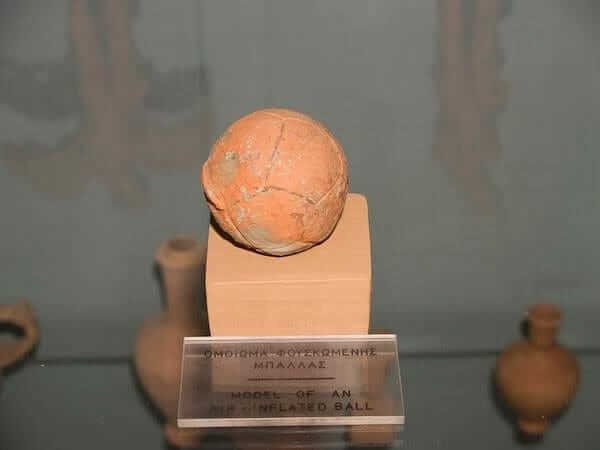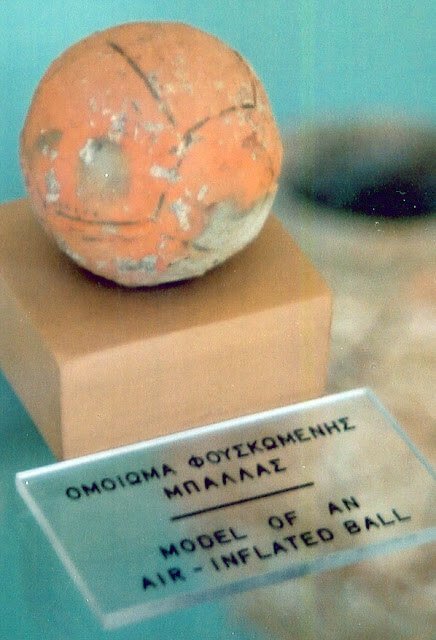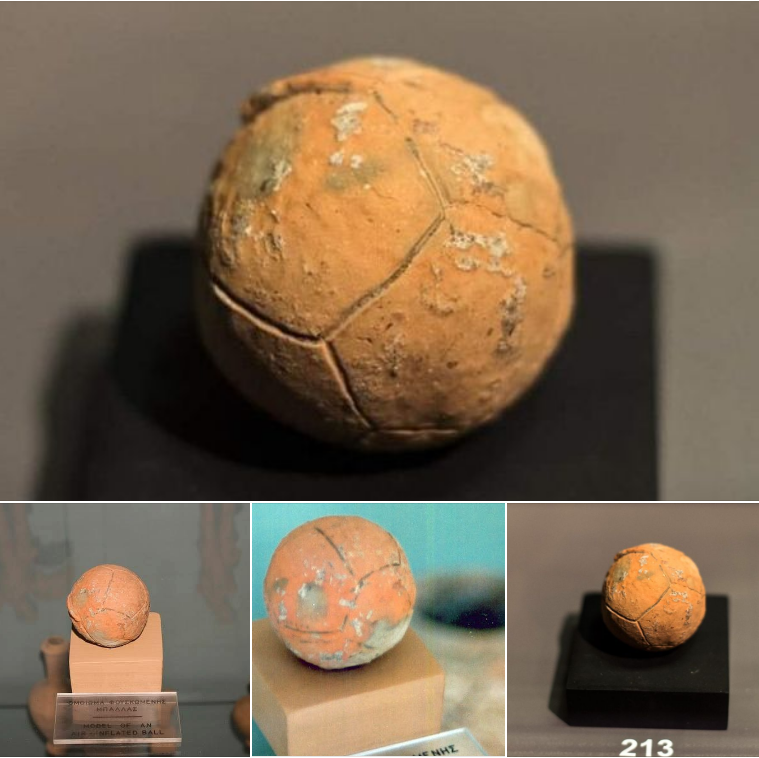In an extraordinary archaeological revelation, a terracotta miniature found on the island of Samothrace has intrigued both scholars and soccer fans. This artifact, believed to be the oldest known soccer ball in existence, was excavated from Tomb S130 in the South Necropolis, part of the Sanctuary of the Great Gods. Dating back to the Hellenistic period, around 275–250 BCE, this solid clay sphere closely resembles contemporary leather soccer balls. This compelling discovery offers a captivating insight into the leisure activities of ancient Greece, suggesting that the roots of soccer-like games might reach back much further in time than previously assumed.
Discovery and Context

The artifact was uncovered by an American archaeological team led by Elizabeth Dusenbury, in partnership with Greek archaeologist Andreas Vavritsas, who continued his work until his death in 2014. The tomb is renowned for its religious significance and yielded a range of intriguing items, but none as fascinating as this small, spherical terracotta ball. Despite its simplistic design, the ball’s shape bears a striking resemblance to today’s leather soccer balls, sparking curiosity about its purpose and importance in ancient society.
Ancient Greek texts confirm the use of leather balls, typically crafted by inflating the bladder of large animals like pigs. These balls were often assembled from stitched-together pieces of leather or fabric and packed with materials such as horsehair, straw, or wool. They played a central role in various games enjoyed by both children and adults, underscoring the widespread popularity of ball games in ancient Greek culture.
Significance and Interpretation

The discovery of this terracotta ball in a burial site is particularly noteworthy. It implies that ball games were not just for entertainment but may have held cultural or symbolic significance. The presence of this object alongside the deceased might indicate that ball games were woven into funerary practices or religious ceremonies, potentially reflecting a belief in the continuation of such activities in the afterlife. Alternatively, it could represent a beloved pastime of the person interred.
Ball games were indeed favored in ancient Greece. Games like aporrhaxis and anakrousis involved striking a ball against the ground or a wall with significant force, with the aim of keeping the ball in play for as long as possible. This concept bears similarities to modern soccer, where maintaining control of the ball and keeping it in motion is key.
A Link Between Eras
Thus, the terracotta ball from Samothrace serves as a fascinating connection between ancient and modern times. While it is improbable that the ancient Greeks engaged in a game identical to modern soccer, this artifact indicates that the fundamental enjoyment of ball games has endured through history. The striking similarity between this ancient clay sphere and today’s soccer balls highlights the continuity of human culture and the lasting nature of play across various eras and societies.
Conclusion
As researchers continue to explore this artifact, it may reveal more about the recreational life of ancient Greeks and potentially inspire a reevaluation of the origins of ball games. While it remains uncertain whether this small terracotta object from Samothrace truly represents the oldest soccer ball in existence, its discovery undeniably enhances our understanding of ancient Greek culture and its impact on the recreational activities that influence our world today. This remarkable find stands as a testament to the timelessness of play and the connections that bind us to our long-ago ancestors.

